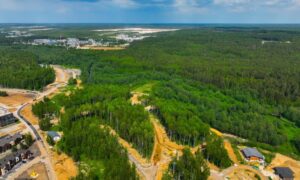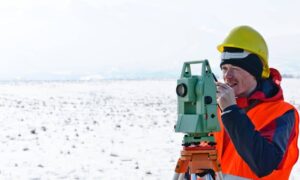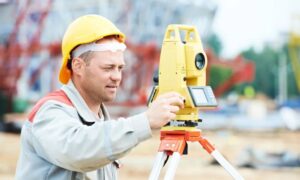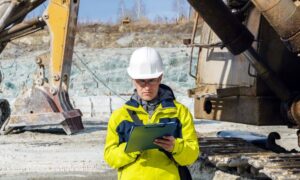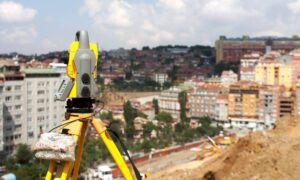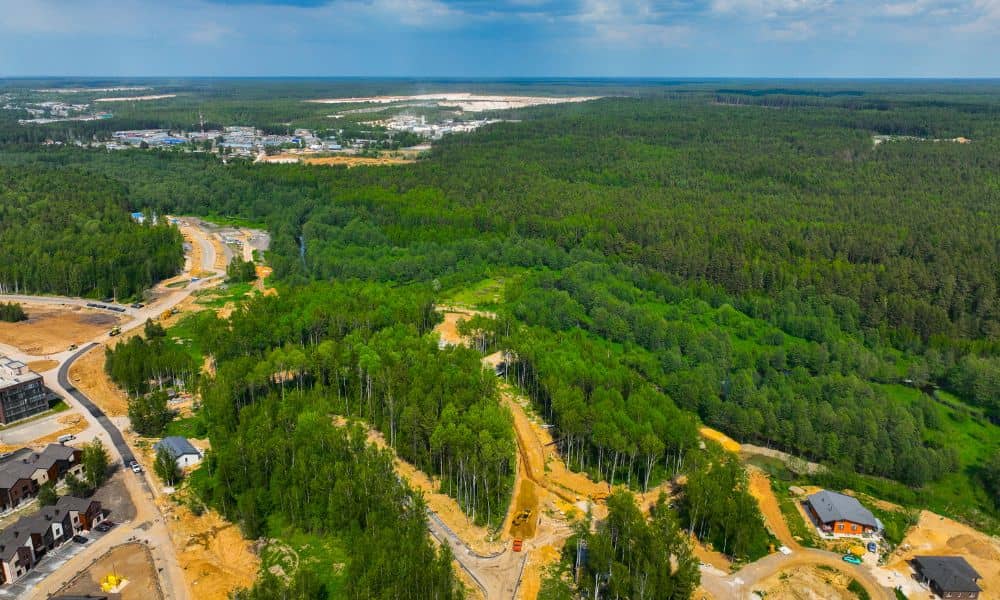
Most people in Minnesota know about the Lost 40, but not everyone knows why that forest survived. The story connects directly to how land was surveyed more than a century ago—and how lidar mapping now prevents those kinds of mistakes. When you see how one error shaped an entire piece of Minnesota’s history, you start to understand why today’s tools matter.
The Lost 40 wasn’t preserved because someone planned to protect it. It survived because a group of surveyors in the 1880s marked a lake in the wrong place. They thought the land was underwater, so logging crews skipped it. Because of this, the trees in that patch of forest grew untouched for more than 300 years. It’s one of the last old-growth stands in the state. And it exists because of a simple surveying mistake.
This story feels like something out of a movie. Yet it teaches us something real: accurate land data can change the future of a property, a neighborhood, or even an entire region.
The 1880s Crew Faced a Tough Job
Surveyors back then didn’t have drones, satellites, or digital maps. They walked through thick forest while carrying chains, compasses, and handwritten notes. When terrain got steep or swampy, measurements slipped. When trees blocked the view, they guessed. And when Minnesota’s weather turned rough, their work got even harder.
It wasn’t their fault—they simply didn’t have the tools we have today. Even highly skilled surveyors struggled with dense canopy, wetlands, and uneven ground. One wrong bearing or distance could shift everything on the map, and no one had a quick way to double-check the work.
Mistakes like the one that created the Lost 40 were common. Most didn’t lead to historic forests. But many changed how people used land.
A Small Mistake, A Huge Impact
The Lost 40 shows how one error can shape land use for generations. If the survey crew had marked that lake correctly, the 40 acres would have been logged like everything around it. Developers might have used it. Farmers might have cleared it. Instead, it became a rare look at what Minnesota’s forests once looked like.
Today we don’t face the risk of losing untouched old-growth forest, but we do face other risks. Misjudged terrain can affect how water moves, where buildings sit, how much land is usable, what a property is worth, and where boundaries fall. When survey data goes wrong, projects fall apart, budgets explode, and property owners deal with problems for years.
So the big question becomes: How do we avoid another “Lost 40” situation in today’s world? That’s where modern tools come in.
LIDAR Mapping Changes Everything

Lidar mapping gives us a level of accuracy that old survey crews could not even imagine. Instead of walking through dense woods and trying to estimate slopes or water edges, lidar shoots millions of laser points at the ground. Those points bounce back and create a precise 3D picture of the land.
And because lidar can “see” through trees, brush, and uneven surface features, it solves the exact problems that caused the Lost 40 mistake.
It handles dense forest that once hid the true ground shape. Tree cover no longer blocks the land beneath. Lidar measures elevation even under heavy canopy, so surveyors don’t need to rely on clear sightlines.
It marks water boundaries correctly. The 1880s crew thought a lake covered land that was actually dry. Lidar shows the difference between open water, wetland edges, and solid ground with exact precision.
It removes the need for long visual lines. Older methods required clear sight between two points. Lidar doesn’t. It scans the ground from above, so terrain and vegetation don’t block the view.
It also creates a permanent digital record. Paper maps faded, tore, or got lost over time. Digital lidar data stays in the system and can be checked years later.
These strengths make lidar more reliable than anything the old survey crews ever had. And when a professional land surveyor reviews that lidar data and compares it with what’s happening on the ground, the picture becomes even clearer. That combination—advanced tech plus real-world experience—helps prevent the major mistakes that once shaped places like the Lost 40.
Lessons for Landowners and Developers
The Lost 40 teaches us that land can surprise you. Sometimes it hides value. Sometimes it hides problems. That’s why larger properties, wooded parcels, or land with unknown terrain benefit the most from detailed elevation data.
One important lesson is to never trust old assumptions. Historic surveys didn’t always capture real ground conditions. Old boundaries, water lines, and terrain shapes might be way off. Lidar helps uncover those hidden differences so owners can plan with confidence.
Another lesson is that terrain affects everything. Slope, drainage, and ground elevation impact building pads, driveways, stormwater flow, and construction cost. The Lost 40 shows how a misunderstanding of land shape changed everything on that site. Modern lidar helps avoid those surprises.
It also reminds us that large or wooded parcels need more than a quick look. Walking land doesn’t show everything. Brush, trees, and uneven ground hide features that matter. Lidar cuts through all of it and shows the real lay of the land in minutes.
And finally, good data protects your investment. When terrain data is wrong, budgets explode. When it’s accurate, planning becomes smooth and predictable.
Developers now rely on lidar when they want a full understanding of a site before they buy, subdivide, or build. It can reveal risks early and prevent issues from turning into expensive problems later.
How LIDAR Helps Preserve the Future
The Lost 40 story isn’t just a fun Minnesota fact. It’s a reminder that mapping isn’t just lines on paper. It shapes land use, environmental decisions, and long-term planning.
When lidar mapping becomes part of early due diligence, owners get a clear picture of the land. That helps protect natural resources, plan safer projects, avoid costly surprises, reduce legal conflicts, and support smart growth in fast-changing areas.
Good data leads to smart development. And smart development protects both land and people.
Final Takeaway
One surveying mistake kept a forest alive for more than a century. Today, lidar mapping gives us the power to avoid errors that big—and to understand land with a level of clarity we’ve never had before. When landowners, builders, and developers use modern tools, they make decisions that stand the test of time.
The Lost 40 reminds us of what happens when surveying goes wrong. Lidar shows us how to get it right.
